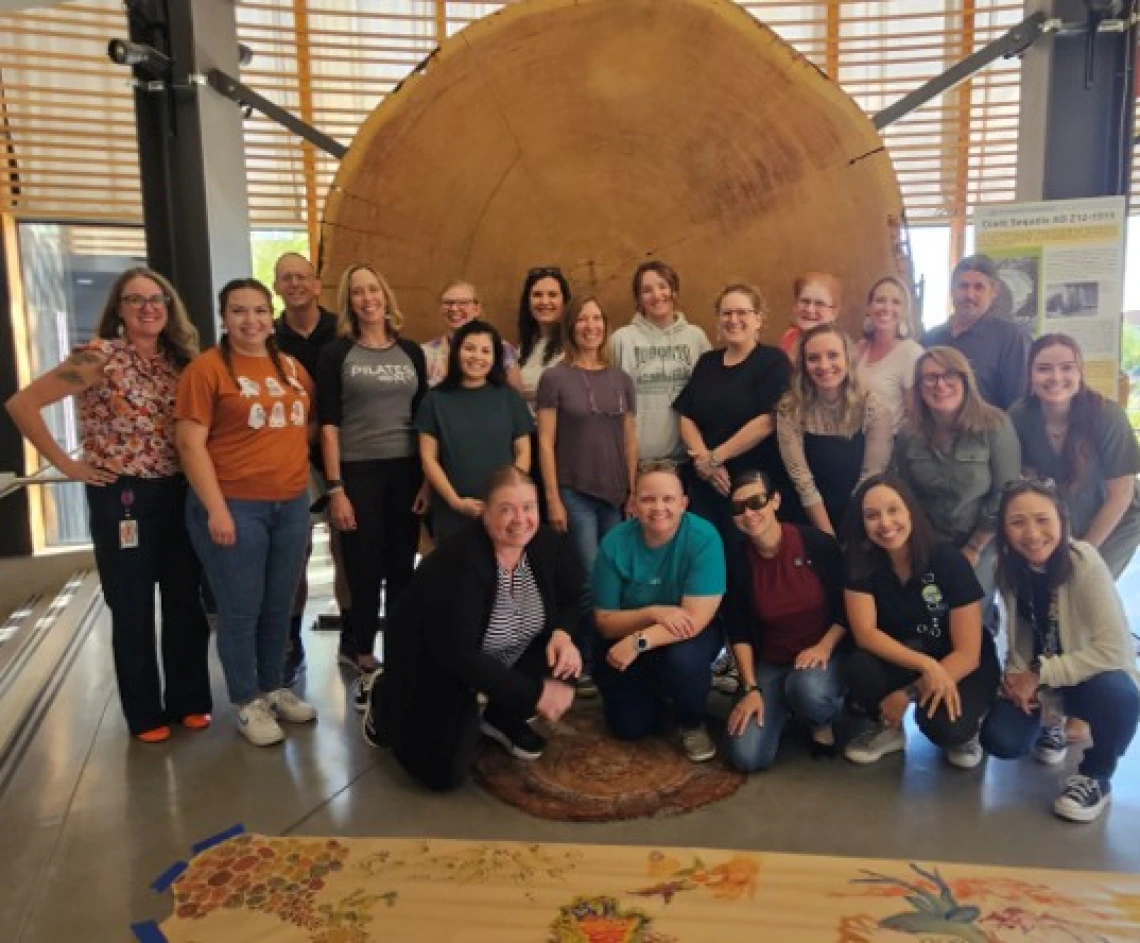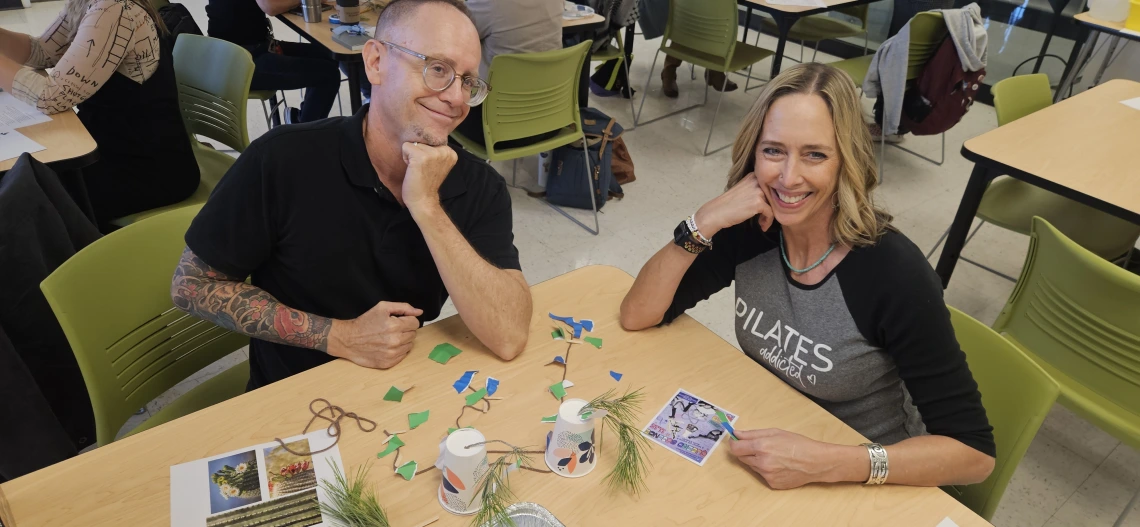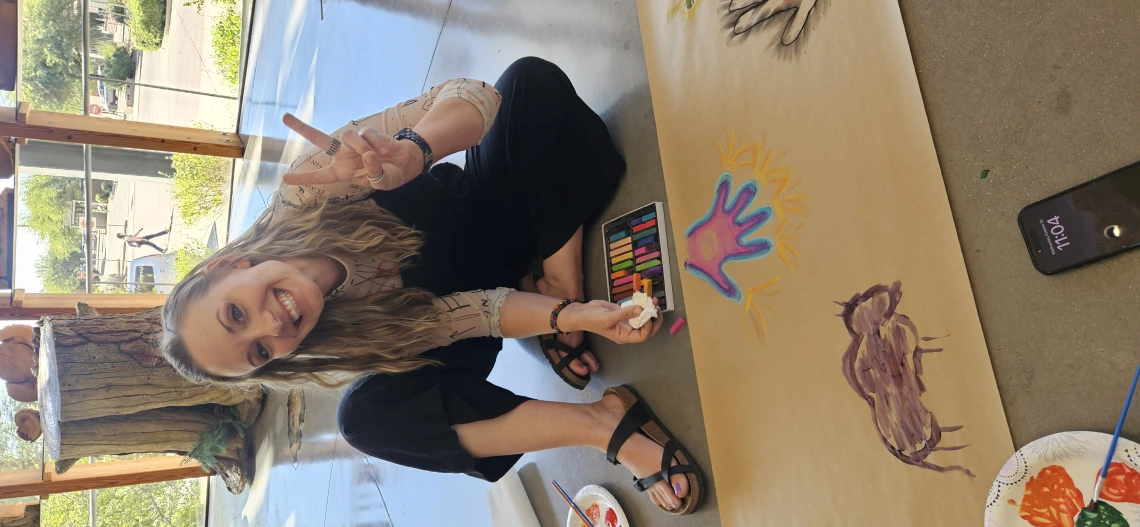Late October, as sunlight streamed through the windows of the Laboratory of Tree-Ring Research at the University of Arizona, a group of twenty Tucson Unified School District (TUSD) art educators stepped into a different kind of studio—one where science instruments sit beside old-growth wood samples and the hum of discovery fills the air. But this wasn’t a field trip for scientists; it was an immersive professional development workshop for TUSD K–5 art teachers, designed to spark new connections between the arts, science, and how young learners make sense of the world. Our goal for the day was simple but powerful: to explore how integrating art and science can inspire deeper learning and creativity in elementary classrooms, while aligning with Arizona’s rigorous arts and science standards.
Listening to the Language of Trees (Kindergarten)
We began with our youngest learners in mind, exploring the delightful picture book Listen to the Language of the Trees by Tera Kelley. Using this gentle introduction to ecosystems and interdependence, we discussed how even young children can begin to observe the world as scientists do—by noticing patterns and connections.
The related science and art activity brought this story to life: teachers crafted fungi and tree models from recycled paper and clay, sparking discussions about how trees and fungi support each other through underground networks. Then, they created shimmering “salt trees” using watercolor and salt crystals, reinforcing the concept of texture, structure, and living systems through visual art.
Yubitza McCombs said: “I loved how simple the supplies were. Nothing too complicated. Ideas are clearly aligned with the visuals.”
This activity connected Arizona’s Kindergarten Science Standard on understanding relationships within systems and the Visual Arts Standards on exploring texture and form. Most importantly, it modeled how hands-on artmaking can support vocabulary development and scientific comprehension in early literacy.
Painting the Past: Cave Art and Color Creation (First Grade)
Next, we turned to ancient storytelling through the lens of Ancestry: The Mystery and Majesty of Ancient Cave Art. This literacy connection grounded our discussion in how early humans used art to communicate ideas, record observations, and express community—making it a natural bridge between social studies, literacy, and science.
Teachers experimented with pigment mixing, combining red, yellow, and blue to create their own natural tones, just as prehistoric artists did. Then using chalk pastels, they crafted cave-style artworks on textured paper, embedding symbols and stories inspired by the world around them.
Krysta Ellis: “loved the ideas for different ways to do art with new materials and how to relate it to science.”
Through this process, educators explored color theory and chemical change, connecting the activity to physical science standards around observable properties of materials. The exercise affirmed that color mixing and creative storytelling nurture both curiosity and cultural appreciation reminder that science begins with the impulse to express and record.
Rings of Time: Watercolor and Wax (Second Grade)
The second grade lesson blended scientific observation with poetic interpretation. Teachers examined tree cookie samples, counting rings and identifying growth variations. We discussed what each ring represents—years of drought, abundance, and adaptation.
The art component, “Waxing Poetically,” introduced a wax-resist watercolor technique. Using white crayons or wax sticks, teachers drew abstracted tree-ring patterns, brushed over them with watercolor, and watched the visuals unfold. As images emerged, they wrote short reflections inspired by their observations, transforming data into art and language.
This combined activity drew on Earth science standards tied to natural resources and life cycles, while fulfilling arts standards in mark-making and composition. It reminded educators that observation and expression share a common foundation: attention to detail and a respect for process.
Karise Allen Bedwell said: “I learned so much about tree ring dating and connecting science and art to the curriculum. The lesson plans are wonderful and can be used right away.”
Drawing Ancient Survivors: Bristlecone Pines (Grades 3–4)
For upper-elementary students, we explored one of Earth’s most astonishing species, the ancient bristlecone pine. We began with photographs and ecological descriptions, discussing how these trees endure in severe environments through adaptations like dense wood, short needles, and slow growth.
The accompanying project, Drawing Ancient Survivors, introduced the art of scientific illustration. Teachers practiced close observation and detailed rendering of bristlecone pinecones, needles, and bark textures using pencil and fine pens. The exercise demonstrated the role of drawing as both artistic expression and scientific documentation.
In connecting with the science standards on structure and function in living things, the project also embraced the Visual Arts objective of refining technique and precision. Teachers reflected on how this exercise fosters patience, focus, and the ability to translate observation into understanding—skills that serve students across disciplines.
Recap
As the final activities wrapped up, a sense of excitement and camaraderie lingered, with teachers exchanging ideas for bringing these arts-integrated lessons back to their students. This immersive workshop at the Laboratory of Tree-Ring Research gave Tucson’s K–5 art educators a unique opportunity to explore the powerful intersection of science, art, and storytelling through hands-on activities inspired by tree rings and ancient creative traditions. These twenty teachers directly educate a combined total of 3,345 students.
By blending visual expression with scientific observation, the educators deepened their understanding of Arizona’s academic standards and discovered new ways to make learning meaningful for their students. Arts integration matters because it engages curiosity, fosters creative problem solving, and helps children build connections across disciplines, transforming classrooms into lively environments where every student’s imagination and understanding can flourish.
Chika Hayashi-Willis said: “We need more days, not just a one-day workshop. This workshop had so much information and great arts integration lessons that we wanted to take more time to learn and experiment”. It was the most useful and effective workshop we have waited for a long time. We learned so much about not only trees but related social issues and the researchers’ tremendous efforts. The arts integration lessons were very helpful for us to take back to our schools”.



